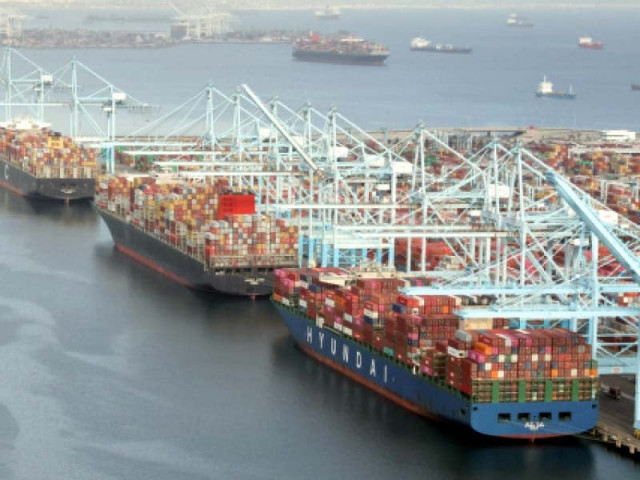Trade deficit stays high at $32b
Imports accelerate at twice the pace of exports in Jul-Feb FY22

Pakistan’s trade deficit remained significantly high at $32 billion in the first eight months of current fiscal year as the pace of increase in exports stood at nearly half of the surge in imports, making the government’s external position vulnerable.
According to data released by the Pakistan Bureau of Statistics (PBS) on Wednesday, the trade deficit in July-February 2021-22 was $14.4 billion, or 82%, more than the same period of previous year.
The government had set the annual trade deficit target at $28.4 billion that has already been breached in the seventh month of current fiscal year.
The government’s external sector projections are heavily dependent on the trade deficit estimates. The higher deficit will lead to more foreign borrowing compared to the government’s initial estimates.
The projections are way off the mark despite the fact that Finance Minister Shaukat Tarin is personally monitoring the situation.
The federal government took foreign loans of $13 billion in the first seven months of current fiscal year, including the debt raised through the most expensive Sukuk and Naya Pakistan Certificates.
However, the central bank’s foreign currency reserves were constantly on the decline and dipped further to $16.8 billion due to the widening trade deficit.
Imports in the July-February period of 2021-22 increased 55% to $52.5 billion. In absolute terms, they grew $18.6 billion, according to the PBS.
The revised annual projection of imports at $75 billion is far higher than the targets of commerce and finance ministries.
The central bank has introduced cash margin requirement (CMR) for the import of goods besides curtailing consumer financing to ease the pressure on imports.
The currency was also devalued to make imports expensive, however, the Ministry of Planning said last week that those measures were not proving effective in containing the current account deficit that had already widened to $11.6 billion in the first seven months of 2021-22.
However, for the second month in a row, a slowdown was witnessed in imports, although it was very nominal and insufficient to reverse the trend.
The monthly import bill was lower by $138 million in February compared to the preceding month.
Exports increased 26% in the first eight months of current fiscal year and stood at $20.5 billion against $16.3 billion in the same period of previous year, according to the PBS.
In absolute terms, there was an increase of $4.2 billion in exports. However, the planning ministry’s half yearly report stated that out of the nearly $2 billion increase in textile exports in six months, the increase in quantity was negligible, which fetched just $343 million.
During the period under review, exports equaled to 78% of the annual target of $26.3 billion, indicating that the target would be met comfortably.
The Ministry of Commerce now projects that exports will touch $31 billion in the full fiscal year.
Monthly data
In February 2022, imports were recorded at $5.9 billion, showing an increase of $1.3 billion, or 28.3%, compared to the same month a year ago, according to the PBS.
PBS stated that exports of goods stood at $2.8 billion in February, higher by nearly 36%, or $740 million, over the same month of previous year.
Consequently, the trade deficit widened over 22% year-on-year to $3.1 billion in February. However, the quantum of deficit was shrinking.
The government’s trade policies have been hijacked by a few hand-picked influential exporters, who put pressure to take monetary benefits, keeping the export base narrow and restricted to a few sectors.
On a month-on-month basis, exports increased 7.4% to $2.8 billion in February 2022 over January 2022, showing a rise of $194 million.
In February, imports showed a marginal contraction of 2%, or $138 million, on a month-on-month basis. As a result, the trade deficit narrowed to $3.1 billion in February, down nearly 10%, or $332 million, on a month-on-month basis.
Published in The Express Tribune, March 3rd, 2022.
Like Business on Facebook, follow @TribuneBiz on Twitter to stay informed and join in the conversation.



















COMMENTS
Comments are moderated and generally will be posted if they are on-topic and not abusive.
For more information, please see our Comments FAQ